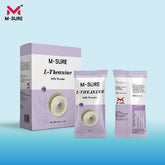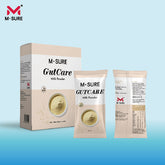Core Standards for Choosing Probiotics
by
BiotechAusway
12 Oct 2025
When selecting probiotics, focus on four key criteria:
-
Strain Identification — Clearly labeled strain name and number.
-
Viability & Quantity — Recommended daily intake ≥ 100 million CFU.
-
Stability — Proven resistance to stomach acid and bile.
-
Clinical Evidence — Strains supported by published medical research.
💡 Examples:
Bifidobacterium BB-12 and Lactobacillus rhamnosus LGG are both well-supported by clinical studies and suitable for targeted health needs.
👶 Strain Selection Recommendations for Different Groups
Infants
-
Prioritize nationally approved strains such as Bifidobacterium animalis BB-12 and Bifidobacterium breve M-16V.
-
Preferred forms: Drops or powder.
-
Recommended dose: 100 million–10 billion CFU daily.
Adults – Gut Health
-
Effective strains: Bifidobacterium triple viable and Clostridium butyricum for diarrhea or constipation.
-
Take 2 hours apart from antibiotics.
Immune Support
-
Recommended strains: Lactobacillus acidophilus HN019 and Lactobacillus reuteri DSM17938.
-
Enhance immunity — ideal for allergy-prone individuals.
💊 Dosage Forms and Usage Notes
-
Forms:
-
Capsules — Resist stomach acid but may be harder to swallow.
-
Powder — Easier to take; suitable alternative.
-
Infants — Use drops or freeze-dried powder.
-
-
Timing: Take 30 minutes after meals to reduce stomach acid damage.
-
Contraindications:
-
Avoid taking with antibiotics or bismuth preparations.
-
Use with caution in immunocompromised individuals.
-
🧾 Practical Tips for Product Selection
-
Check Labels — Ensure strain numbers (e.g., Lactobacillus rhamnosus HN019) and CFU counts are clearly stated.
-
Verify Certifications — Choose brands with “Blue Hat” health food certification or clinical validation.
-
Avoid Pitfalls — Steer clear of products with added sugars, flavorings, or dairy residues (especially for allergy-sensitive users).
Note: For detailed guidance on probiotic–antibiotic interactions and purchasing tips, refer to the recommended resources.






